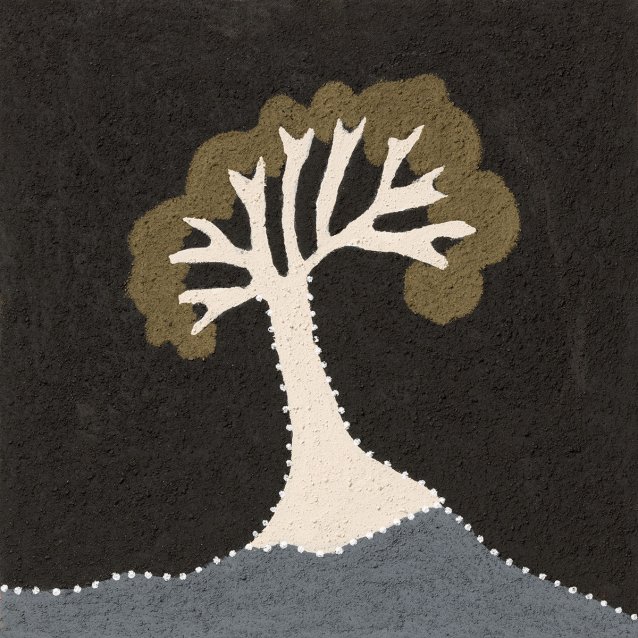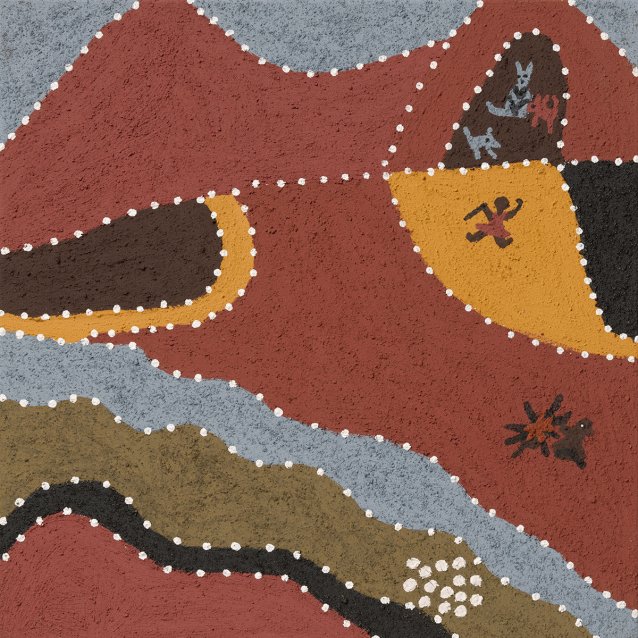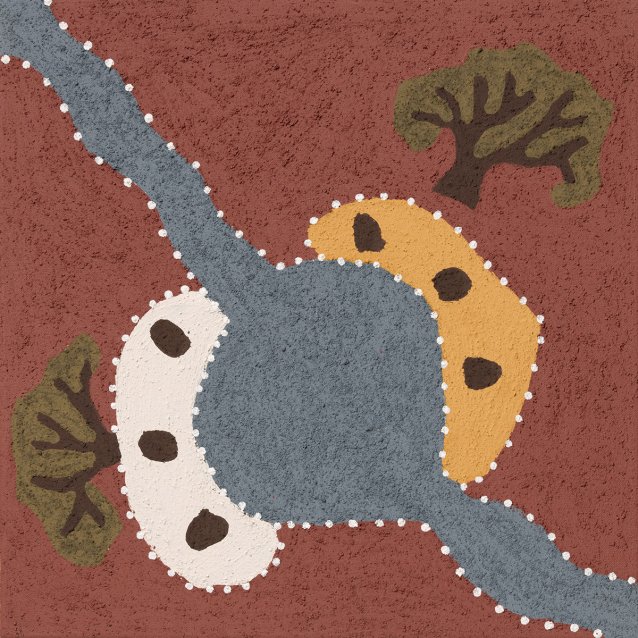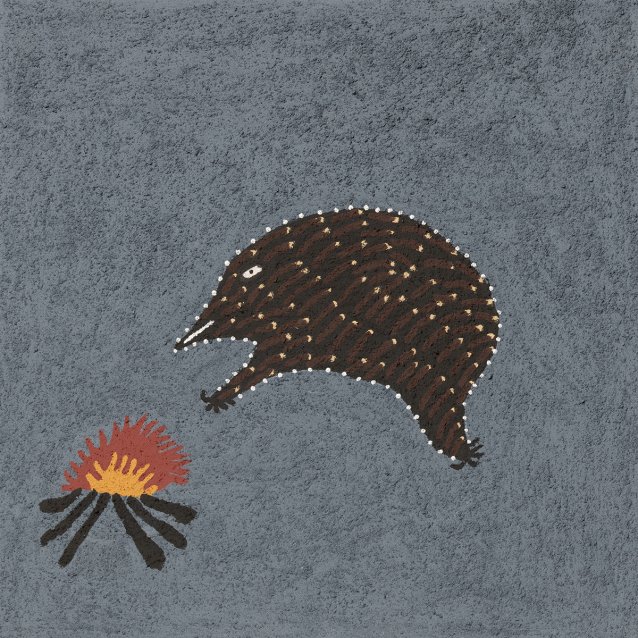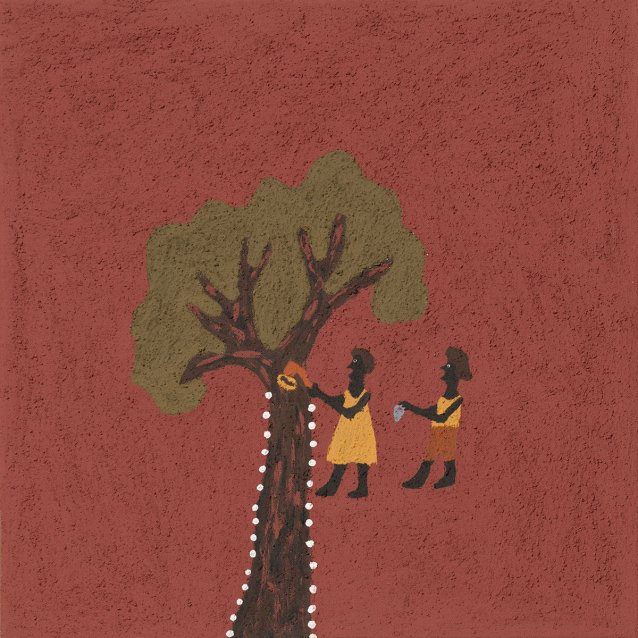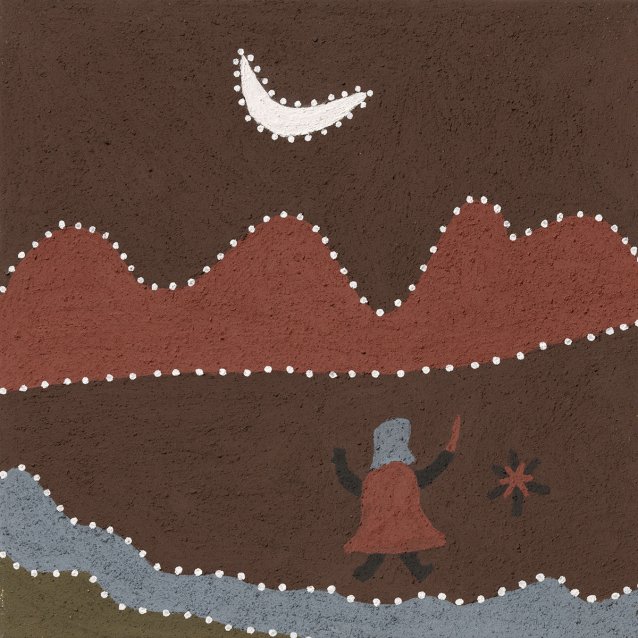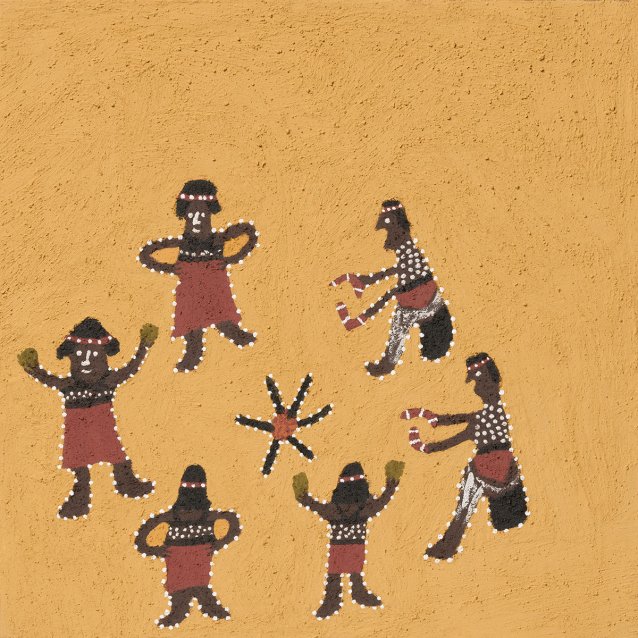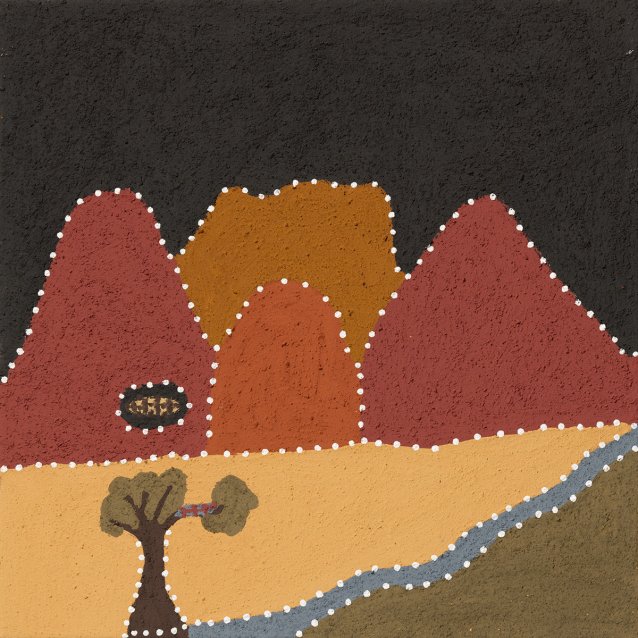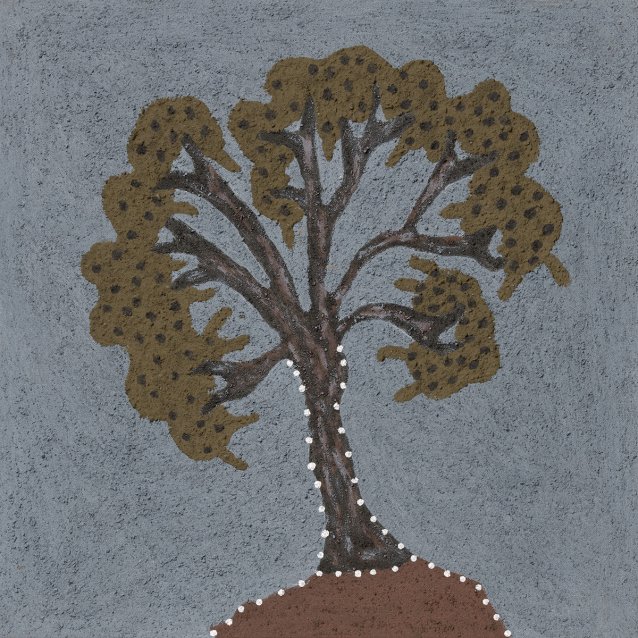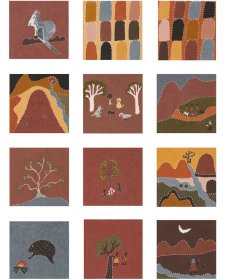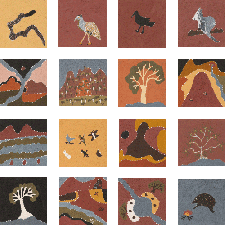Shirley Purdie has lived a storied life, shaped by land, family, law, ceremony and language. She pays homage to the women in her family, representing herself through their collective knowledge, culture and values.
- About us
- Support the Gallery
- Venue hire
- Publications
- Research library
- Organisation chart
- Employment
- Contact us
- Make a booking
- Onsite programs
- Online programs
- School visit information
- Learning resources
- Little Darlings
- Professional learning
